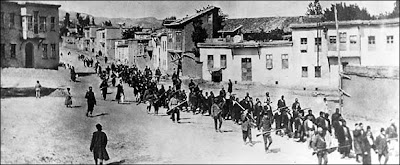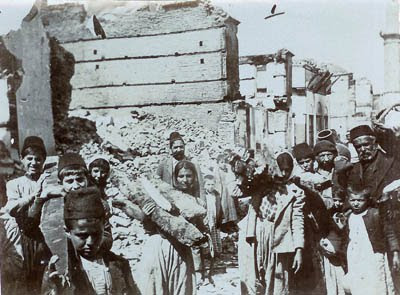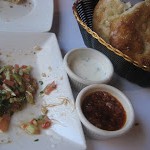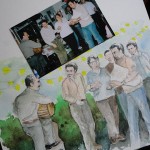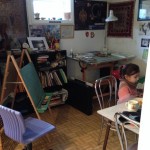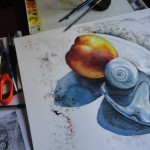Every year on April 24, Armenians around the world remember and commemorate the loss of over one million innocent Armenian people living in Ottoman Turkey in the year 1915. The question of what to do with the Armenian population started many years before 1915. I believe early recorded events were from 1895 and on, 1905, 1906, 1907, 1909 years of mass murders that took place. Muslim Ottoman Turkey was interested in Turkey for the Turks. Christians living in Turkey, for centuries before the Turks showed up, were considered infidels.
And every year, people of Armenian descent want one thing: for this act to be recognized as the first genocide of the 20th Century by the United States and countries around the world. Other countries have formally declared this systematic destruction of a race from their homeland and this massacre, a genocide.
Year after year, the U.S. government suggests it will do just that, and then pressure from Turkey, an ally, makes the U.S. back down. If Germany can say that they committed the holocaust and genocide of the Jewish people and move on, why is it such a big problem for Turkey? It is well known that Adolf Hitler himself pointed to the genocide of the Armenians when he said:
“Who, after all, speaks today of the annihilation of the Armenians?” August 22, 1939
In his campaign speeches before he was elected, President Barak Obama promised he would recognize the atrocities of 1915 as genocide. Did that happen after his election? No. Neither Pres.Clinton nor Bush would stand up to Turkish pressure and use the word “genocide”.
To this day the Turkish government insists this is just a fabricated story by a disgruntled population of people. They suggest that Armenians murdered Turks at that time. If the harrowing recollections of the people being pulled out of their homes, forced to watch parents beheaded, tortured in many ways, girls being raped, forced to march out into the desert hungry and thirsty, or to be shot en masse and dumped in the rivers are just stories, why would so many grandparents and great-grandparents make this stuff up? Why? What would they gain by fabricating atrocities like this? Where did the photos of the survivors, the piles of bodies, and the destruction come from?
Henry Morgenthau Sr., U.S. Ambassador to the Ottoman Empire. From his book Ambassador Morgenthau’s Story, 1919. He writes:
“When the Turkish authorities gave the orders for these deportations, they were merely giving the death warrant to a whole race; they understood this well, and, in their conversations with me, they made no particular attempt to conceal the fact. . . . I am confident that the whole history of the human race contains no such horrible episode as this. The great massacres and persecutions of the past seem almost insignificant when compared to the sufferings of the Armenian race in 1915.” (http://www.genocide-museum.am/eng/quotations.php)
My father’s parents lived through such things. I was small when they were alive, but my father told us some of the story of their life in, and escape from, Turkey. It seems my grandfather was shot in the wrist as a nine year old child, by Turkish soldiers who came through his town of Sis, Turkey. Much of his life was unknown as it may have been too painful to discuss with his children.
My grandmother also escaped, with some family members, to Cyprus from the large, cosmopolitan city of Adana, Turkey. The year may have been 1909. I read a book about the burning of Adana and calculated the age of my grandmother at that time. During Easter services the parishioners were locked in their church by the Turkish gendarmes and the church was being torched from outside.
Somehow my grandmother, her mother and youngest brother, was able to get out and run home, where they found the rest of the family hacked to death and strewn around their garden and home. One brother was hiding up the family’s chimney and dropped down when he realized it wasn’t the Turkish soldiers, but his mother in the house. The mother became blind from her hysteria.
Before they left their homeland they buried valuables in the enclosed garden, as did many victims of the massacres. Did they believe they might some day be able to return? If anyone did return they found Turkish families living in their homes.
These events were rarely discussed. Too painful to remember or recall. However, when my grandmother was hospitalized before she passed away, in her haze she thought my father was her youngest brother and recalled to him the day they ran home from the burning church saying, “Remember Vahan, when they burned the church, how we ran home, how we found the family dead?” Can you imagine the chill of that moment for my father?
When I was a kid I broke my ankle and visited an orthopedist for treatment. In the waiting room was an old woman who reminded me of my grandmother. A lady with similar features, wavy, gray hair, proud stature and attitude. My mother struck up a conversation with her, and found she was Armenian. They talked for a while as I listened.
My eyes strayed to her arms while she spoke because I noticed a line of tattooed numbers on her left forearm. She saw me notice them and told us that when she was a little girl, the Turkish soldiers came into her town. They rounded up the male members: rich, poor, old, young, frail, whatever. They were never seen again, her father and brothers included. Days later they came for the babies, women and girls, to march them out of the town.
The Turks decided the way to keep track of them was to tattoo numbers on the arms. I was shocked. This poor woman lived with those tattoos, a daily reminder of a horrible past. Why would she make up a story like that? Where else would those tattooed numbers come from? Ladies would never chose to have tattoos in that time.
That the Armenian people are around today is testament to their strength and drive. They found ways to survive such tragedy to keep their language, heritage and culture alive. This weekend the Armenian community is holding the annual Genocide commemoration in Times Square, New York, as well as other major cities in the world, with local dignitaries, celebrities, and speeches. Hopefully some day, important people will notice and act.
I told you the Armenian story is one that needs it’s own space.
